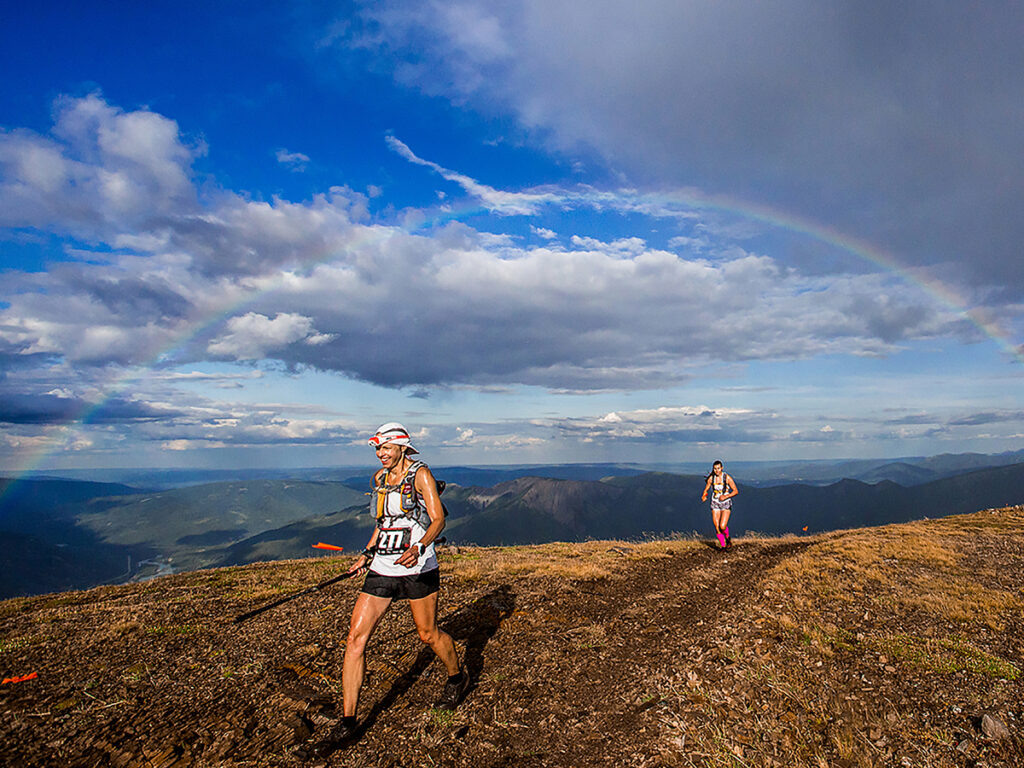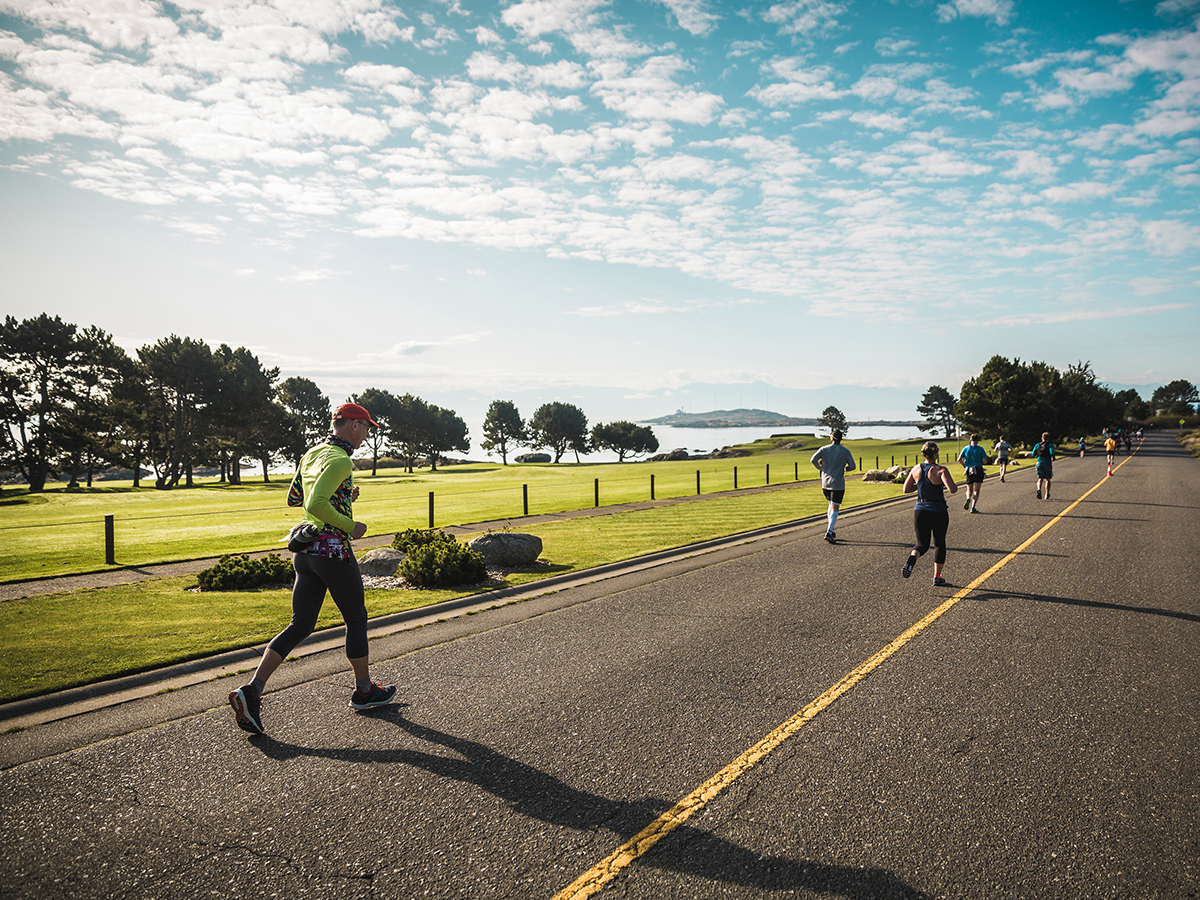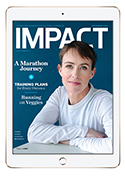It was just over a year ago – March 2020 – that the world of racing started collapsing around us. All of a sudden the word ‘virtual’ became a part of our vocabulary, and race directors were pivoting as quickly as they could to save their races while trying to respond to registrants demands. Many spring and summer races decided to postpone until the fall, not realizing that the pandemic would still be a major issue. Then came the realization that the 2020 race season wasn’t going to happen.
Now well into 2021 where do races stand? Mass vaccinations are proceeding globally but COVID-19 cases aren’t receding with many countries experiencing a third wave. Many races have decided to remain virtual and/or plan hybrid versions. Others are hoping by the fall they can have a live race. Whatever the decision race directors are looking forward to planning their events and creating new and innovative ideas to bring registrants back.
“All of our events are coming back virtually this year as well as the addition of a few virtual-only events”
— Charlotte Brookes
“New is the 5K Coffee Club Virtual, a hyper-local Vancouver based event to get people moving to different coffee shops across the city. We have another virtual event launching in May in Montreal and are creating some magic in Toronto for a new late Spring / early Summer virtual event there,” says Charlotte Brookes, National Event Director, Canada Running Series (CRS). “CRS is hoping that their popular fall events such as the Eastside 10K and Scotiabank Waterfront Toronto Marathon can happen: “We anticipate being able to make a decision about 12 weeks prior to our fall events,” adds Brookes.
In 2020 the Saskatchewan Marathon cancelled their spring race at short notice, going virtual. Being proactive they decided to remain virtual for 2021 making their decision in the fall. “Being a spring race, we didn’t have the confidence that people would be vaccinated and willing to come together in time for our race,” says Kim Ali, Race Director. “As well, the required protocols surrounding a race during the pandemic are quite demanding, and the gathering restrictions of 30 people wasn’t likely to increase to the 4,000 participants we normally get.” Making that decision early is enabling them to plan well ahead and expand their marketing, unlike last year when they had eight weeks to pivot from live to virtual, with no experience of a virtual event. The Virtual Saskatchewan Marathon will be from May 28 to June 28.
The Royal Victoria Marathon cancelled their 2020 event and decided not to have a virtual event but this year with the new re-brand – the return of the Royal title after 10 years – they have a five-race virtual event: the Royal Flush. The distances – 1 mile, 5k, 10k, half-marathon and marathon can be run or walked and completed between May and the end of September. “Participants can do one event, a pair of events or do all five,” says race director Cathy Noel. A decision about an in-person event in October has not yet been decided.
Most of Run Calgary’s events will have an in-person and virtual component with the Scotiabank Calgary Marathon moving to September from May. “We intend to host as close to a normal Calgary Marathon that people have come to know and love, and that restrictions at that time allow, which likely means reduced numbers for in-person so we are complementing it with a virtual option,” explains executive director Kirsten Fleming.

Val Jensen, Race Director of the Red Deer Women’s Run, held a successful Mothers Day virtual event last year with 1,600 participants and was planning in-person this year with 10 locations. However, a few days before the event they had to revert to virtual because of new gathering restrictions. “Participants made it happen by completed their walk/run at a time and place of their choosing,” said Jensen.
Sinister Sports is planning the return of their live events with separate virtual events. Ultrarunners will be thrilled to see events such as the Sinister 7 Ultra, Canadian Death Race and the Black Spur back on the calendar. The 5 Peaks Trail Series are planning in-person if and when permitted to do so but will have virtual options.
Aaron McConnell, Co-Race Director, TransRockies Race Series, had to cancel his in-person events in June and July. “The provincial governments are still including endurance sports in the same category as all other forms of gatherings, and they aren’t giving any firm timelines to when those gatherings can occur. We are planning some virtual events in any case. The TransRockies Run will take place in May and we will follow up with a virtual TransRockies Gravel Royale challenge and a virtual Singletrack 6 challenge in June and July.”
When events do go live Brian Gallant from Sinister Sports explains these will look very different.
“That means a lot of modifications, including wave starts and smaller numbers. Aid stations are likely to be contactless and there will be PPE everywhere. We plan to require racers to wear masks in higher-density areas but not while running.”
— Brian Gallant
Other changes races will likely see will be no race-day registration, race expos or award ceremonies, spectator restrictions, curbside package pickup and bagged post-race food, ‘grab and go’ style. Participants may also be required to provide proof of vaccination and/or a negative COVID test.
Race Roster has been adapting and adding new features to their platform to meet the needs of race organizers. These will be utilized when in-person events resume. “Some of the tools that we’ve created already exist to help keep participants safe when in person events start to return in Canada,” explains Jessica Collins, Director of Customer Success. “Things like products with live inventory, our email campaign tool with really robust trigger settings, the ability to customize your event details page, ask event specific questions, or provide event specific waivers will be crucial as we return to racing post-COVID.”
With many races offering hybrid versions this year the feeling is virtual is here to stay in a post-pandemic world. “Virtual provides an opportunity for those that aren’t able to attend the in-person version and it is also an opportunity to still participate in the event who don’t feel comfortable returning to in-person events yet,” says Brookes.
Fleming concurs: “There are no geographical limits and it can engage people all over the world who hopefully one day choose to come in-person. It is very well suited for fundraising, it’s a non-threatening way for people to join in a race for a first time and it’s an additional revenue stream.”
Platinum Racing is planning for all their events to be in-person. Registration for their events – including the Heart of the Rockies Gran Fondo, Ironman Calgary 70.3 and the Great White North Triathlon – are live. They also offer a virtual solo challenge. “We offer a virtual event leader board for all of our races so athletes can train and improve over a given distance,” says race director Tom Bamford. “Athletes can complete the distance wherever they want and upload GPS files to certify they covered the actual race course in a given time.”
Dan Roycroft of Zone4 offers timing services to hundreds of races in the U.S.A. and Canada. He says many races that have social distancing protocols in place are happening south of the border. The situation is different in Canada. “Events here need time to plan and – depending on their provincial guidelines – need permits. While some smaller ones are happening, many have postponed.” Nova Scotia, despite a strict lockdown still saw small events proceeding, he says. “As vaccinations pick up we will see races starting,” Roycroft predicts. “It is easy to have social distancing events.”
Race directors agree with one fact – nothing can replace the experience of in-person racing. There is nothing like the buzz of the start line, the cheering supporters and volunteers on the course and that glorious feeling at the finish line. While there may be some in-person races this year the race industry could take up to two or three years to rebound. For some events it may be too late. “Many organizers have lost literally hundreds of thousands of dollars due to the restrictions and lack of support for our industry,” says Gallant. “Right now it is projected that 65 per cent of the larger races will fold in 2021 if they don’t either get back to work or get government support, above and beyond the existing programs. The event industry has lost close to 100 per cent of its revenue; it’s hard to come back from that.”

McConnell agrees: “There seems to be pent-up demand, which will help rebound once we can operate, with potential for larger field sizes. However, it could take years for organizers to pay back debt incurred from the shut-down.”
While races may take months and years to return to pre-COVID times Fleming says that the industry will come back bigger and better: “We will be more professional and collaborative and be ready for future disruptions because of what we have learned through this process.”
Collaboration is what the race industry does well. Events across the country are supporting themselves and sharing knowledge. “We don’t see one another as competitors as much as we see one another as colleagues, associates, and friends who inhabit and hopefully live in symbiosis in the same shared space,” says Jacob Puzey from the 5 Peaks Trail Running Series. “We’ve collaborated with other race directors in each of our core regions of Alberta, British Columbia and Ontario and have even joined national and international organizations with other race directors to advocate for a safe return to racing, both virtually and eventually in-person.”
One such organization is the Canadian Endurance Sport Alliance (CESA) that was born out of the need for a more united voice to help events affected by the pandemic. One of CESA’s goals is to lobby the federal government for financial support. Race director conferences and town hall meetings across the country are also being held.
Puzey has also found support amongst running retail shops many of whom have also suffered severe loss of sales over the last year. “Participants in our virtual race series can stop by any time during the month of their virtual event to pick up their swag for their race. Shops have offered discounts and the option for participants to do curbside pickup or have their swag shipped to them as part of a purchase from the shop. We feel like this is a small way that we can help racers still feel connected to fellow runners and small businesses connected to the sport while still adhering to public health safety protocols.”
While the pandemic has had a devastating effect on the race industry, organizers haven’t taken this blow sitting down. Many have found ways and means to be creative, to think outside the box and come back with new and innovative ways to present their event – whether it be virtual, live or hybrid. The strength in the industry lies in its organizers and their belief that it can rebound and come back stronger. They also believe that no matter what races look like in future there will be a demand and participants will come back and help in the rebuild.
Read this story in the digital edition of IMPACT Magazine.
IMPACT Magazine’s 2021 Running Issue
Looking for running inspiration? Training for a race? We have first-rate training programs designed by some of the best running coaches for your next 10K, Half-Marathon, Marathon and 70.3 distances, plus an epic Road Running Shoe Review to help you get started on the right foot. Plus – our annual RACE SOURCE GUIDE features hundreds of races that you can participate in from virtual to in-person.


















